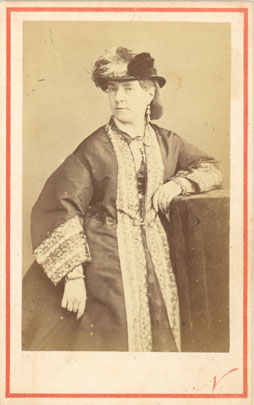Early French Photography: Art and Industry
Seminar Gallery, April 8 – May 7, 2005

Nadar (Gaspard Félix Tournachon) Portrait of a Woman with an Elaborate Hat, c. 1860 cartes-de-visite, albumen photograph 4 1/8 x 2 ½ in. Gift of Robert Flynn Johnson in memory of Dr. Robert Andrew Johnson
After the invention of photography in 1839, the process underwent an extensive period of experimentation. During this time, photography was used for a variety of things such as scientific study, artistic purposes, and pure novelty. This exhibit examines the evolution of photography in the nineteenth century and how it interacted with art and artists in order to find its place in society and as an art form.
Although photography is often considered to have been rejected by the fine arts in the nineteenth century, it was, in fact, embraced by many. The majority of photographers were also artists and there are many instances of collaboration between art and photography. However, as this dialogue between the fine arts and photography progressed, the technology of photography was rapidly advancing to become quicker and easier.
Photography’s improvement made it into an industry, which catered to the wealthy who desired portrait photography as the newest novelty. This demand ultimately resulted in a decline in quality and workmanship in the business. Large workshops, working under one photographer’s name, produced great quantities of photographs that took the form of the carte-de-visite. This industrialization was the end of the “golden age” of nineteenth century photography.
Curated by Britt Eilhardt, Class of 2005